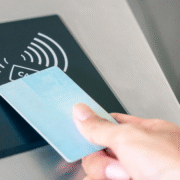Why Secure Cabling Is Essential For Protecting Your Business Data
In an era where cyber threats, data breaches, and downtime can cripple a business, having a secure and well-structured network is no longer optional—it’s a necessity. Many companies invest in firewalls, antivirus software, and encryption, but overlook a fundamental component of data security: secure cabling infrastructure.
Your business data is only as safe as the network that carries it. Poor cabling leaves vulnerabilities that hackers and cybercriminals can exploit, while outdated infrastructure can lead to frequent failures and costly downtime. Let’s explore why secure cabling is critical for protecting your business data and how you can safeguard your organisation from potential threats.

-
Preventing Cyber Threats & Data Breaches
Weak cabling infrastructure creates entry points for cybercriminals to access sensitive business data. Fibre optic cabling provides an extra layer of protection because it:
- Doesn’t emit electromagnetic signals, making it nearly impossible to tap into without detection.
- Reduces the risk of data interception, unlike copper cables, which can be tapped into using basic equipment.
- Supports encryption and secure data transmission, ensuring confidential business information stays protected.
The Bottom Line: A secure network starts with tamper-resistant, high-quality cabling that reduces hacking risks.

-
Ensuring Network Reliability & Uptime
Data security isn’t just about preventing cyber threats—it’s also about ensuring your network remains stable and accessible. Poor-quality cables, improper installation, or outdated infrastructure can lead to:
- Frequent disconnections and downtime.
- Data corruption due to interference and signal loss.
- Reduced network efficiency, slowing down business operations.
High-quality structured cabling minimises interference, providing a stable and secure connection that prevents data loss and system failures.
The Bottom Line: Secure cabling means fewer disruptions, smoother workflows, and maximum uptime.
-
Mitigating Insider Threats & Physical Security Risks
Not all security threats come from outside—insider threats (malicious employees, contractors, or careless mistakes) can compromise business data. Secure cabling helps mitigate these risks by:
- Restricting access to critical infrastructure (e.g., locking server rooms and cable management areas).
- Using dedicated cabling for sensitive departments (HR, finance, R&D) to isolate confidential data.
- Implementing structured cabling to track data flow, making it easier to detect unauthorised access or tampering.
The Bottom Line: A secure cabling infrastructure ensures only authorised personnel have access to sensitive business data.

-
Protecting Against Electromagnetic Interference (EMI) & Environmental Factors
Cabling infrastructure can be affected by EMI, power surges, extreme temperatures, and moisture, leading to data corruption and loss. Investing in secure cabling solutions like:
- Fibre optic cables (immune to EMI and radio frequency interference).
- Shielded twisted pair (STP) cables that reduce interference in high-risk environments.
- Proper cable management and routing to prevent exposure to environmental hazards.
The Bottom Line: Secure cabling ensures data integrity and smooth business operations, even in challenging environments.
-
Future-Proofing Business Data Protection
A strong cabling infrastructure is an investment in long-term security. As businesses adopt AI, cloud computing, and remote work models, data transmission security will become even more critical. Secure cabling solutions:
- Support growing data demands without compromising security.
- Enable faster, safer cloud access and remote work.
- Reduce the need for constant network upgrades by providing a scalable infrastructure.
The Bottom Line: Secure cabling protects your business today and prepares it for tomorrow’s technology.

FAQs
How Can Cabling Affect Business Security?
Weak cabling can make networks vulnerable to cyberattacks, signal interference, and data corruption, leading to security breaches and downtime.
Is Fibre Optic More Secure Than Copper Cabling?
Yes! Fibre optics can’t be tapped into easily, unlike copper cables, which emit signals that can be intercepted.
What Is The Best Cabling Solution For Data Security?
A mix of fibre optic, shielded twisted pair (STP), and structured cabling provides the highest security and reliability.
How Does Secure Cabling Prevent Insider Threats?
Restricting access to critical network areas, using dedicated cabling for sensitive data, and tracking network activity reduce the risk of insider threats.
Should Small Businesses Invest In Secure Cabling?
Absolutely! Cyber threats target businesses of all sizes, and a secure cabling system ensures data protection, reliability, and long-term cost savings.
Conclusion
Cybersecurity isn’t just about software protection—it starts with the right infrastructure. Investing in secure cabling solutions ensures data integrity, reliability, and protection against cyber threats.
For businesses of all sizes, secure data cabling is a non-negotiable. Whether upgrading or installing a new network, choosing the right cabling ensures peace of mind, long-term security, and future scalability.
Need a secure cabling solution? Let’s get connected – get in contact with us now for a quote.








Leave a Reply
Want to join the discussion?Feel free to contribute!